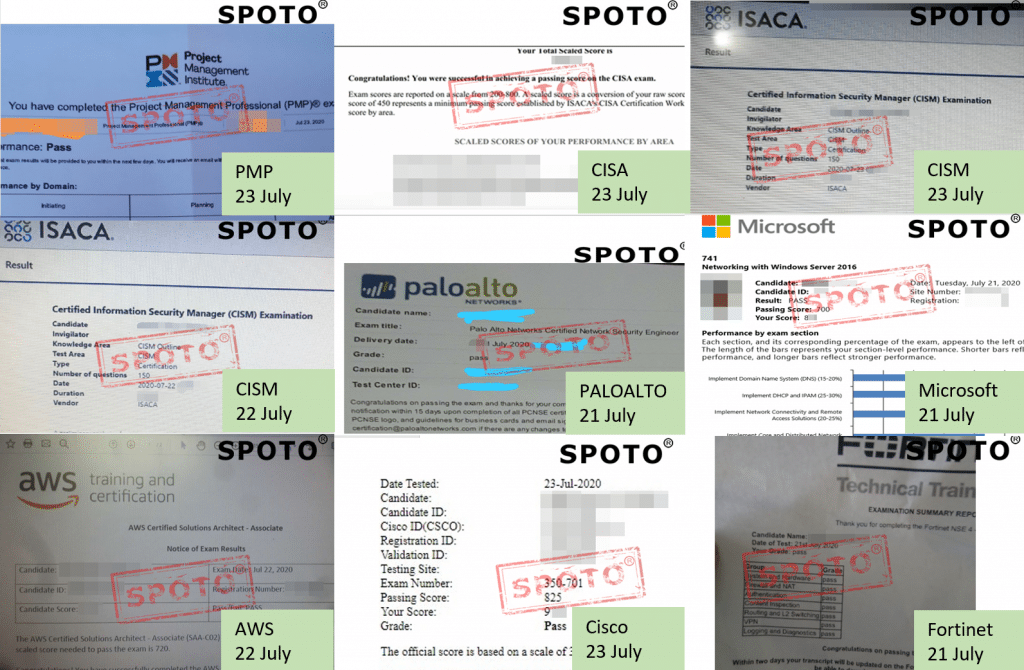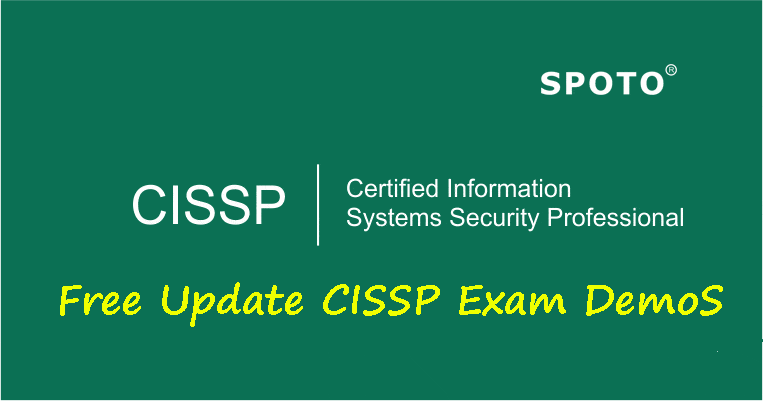CISSP certified exam is a hot topic in the IT industry. SPOTO free update the ISC2 CISSP certified exam demos that cover all real exam answers and questions. We also provide various certified exam dumps. If you want to join us to learn, and you can contact us now!
The following is the Newest CISSP certified exam demos, and you can test your ability to learn:
Benefits of Choosing SPOTO CISSP Exam Dumps


Q1. What does IPSec define?
A) All possible security classifications for a specific configuration
B) A framework for setting up a secure communication channel
C) The valid transition states in the Biba model
D) TCSEC security categories
Answer: B
Explanation: IPSec is a security protocol that defines a framework for setting up a secure channel to exchange information between two entities.
Q2. What is the minimum number of cryptographic keys required for secure two-way communications in symmetric key cryptography?
A) One
B) Two
C) Three
D) Four
Answer: A
Explanation: Symmetric key cryptography uses a shared secret key. All communicating parties utilize the same key for communication in any direction.
Q3. What is the length of the cryptographic key used in the Data Encryption Standard (DES) cryptosystem?
A) 56 bits
B) 128 bits
C) 192 bits
D) 256 bits
Answer: A
Explanation: DES uses a 56-bit key. This is considered one of the major weaknesses of this cryptosystem.
Q4. How many encryption keys are required to fully implement an asymmetric algorithm with 10 participants?
A) 10
B) 20
C) 45
D) 100
Answer: B
Explanation: In an asymmetric algorithm, each participant requires two keys: a public key and a private key.
Q5. What is the major disadvantage of using certificate revocation lists?
A) Key management
B) Latency
C) Record keeping
D)Vulnerability to brute force attacks
Answer: B
Explanation: Certificate revocation lists (CRLs) introduce an inherent latency to the certificate expiration process due to the time lag between CRL distributions.
Q6. When correctly implemented, what is the only cryptosystem known to be unbreakable?
A) Transposition cipher
B) Substitution cipher
C) Advanced Encryption Standard
D) One-time pad
Answer: D
Explanation: Assuming that it is used properly, the one-time pad is the only known cryptosystem that is not vulnerable to attacks.
Q7. Which AES finalist makes use of whitening and post-whitening techniques?
A) Rijndael
B) Twofish
C) Blowfish
D) Skipjack
Answer: B
Explanation: The Twofish algorithm, developed by Bruce Schneier, uses pre-whitening and post-whitening.
Q8. What kind of attack makes the Caesar cipher virtually unusable?
A) Meet-in-the-middle attack
B) Escrow attack
C) Frequency analysis attack
D) Transposition attack
Answer: C
Explanation: The Caesar cipher (and other simple substitution ciphers) are vulnerable to frequency analysis attacks that analyze the rate at which specific letters appear in the ciphertext.
Q9. What type of cipher relies upon changing the location of characters within a message to achieve confidentiality?
A) Stream cipher
B) Transposition cipher
C) Block cipher
D) Substitution cipher
Answer: D
Explanation: Transposition ciphers use a variety of techniques to reorder the characters within a message.
Q10. Which one of the following cipher types operates on large pieces of a message rather than individual characters orbits of a message?
A) Stream cipher
B) Caesar cipher
C) Block cipher
D) ROT3 cipher
Answer: C
Explanation: Block ciphers operate on message “chunks” rather than on individual characters or bits. The other ciphers mentioned are all types of stream ciphers that operate on individual bits or characters of a message.
Latest New Products Pass Report from SPOTO



Comments